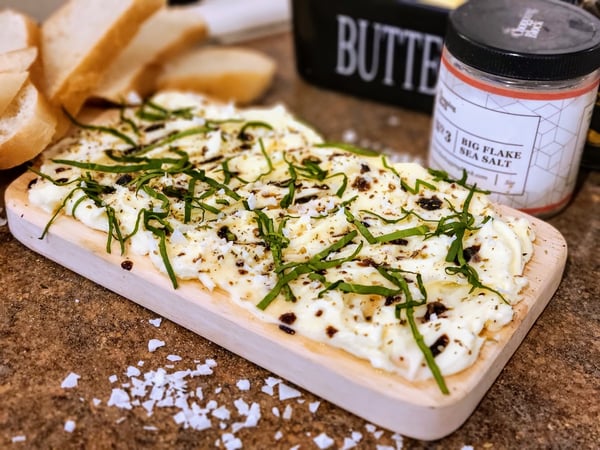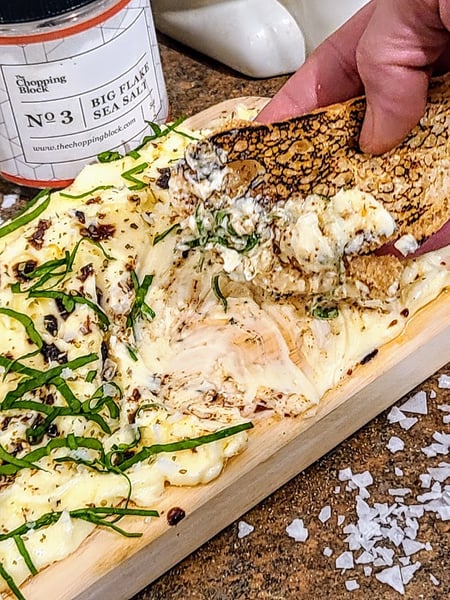I was mindlessly scrolling through social media one day, and I happened to come across a new recipe that I am so excited to try. The latest trend in communal eating is butter boards! The pictures and videos floating around the internet right now are truly beautiful.


Why just serve a thoroughly mixed dip in a bowl when you can “deconstruct” it and make it into a board? You can take this board trend a step further and if butter isn’t your cup of tea, then you can spread ricotta, softened cream cheese, goat cheese, or even mascarpone. Any kind of spreadable consistency ingredient can get the board treatment! Peanut butter or other nut butters, Nutella, and even marshmallow fluff could act as a base for a dessert board variation. Who says you need to use bread as your vehicle to gather the spreads? If using other options besides butter as a base, then why not try graham crackers, lady fingers, pita, crackers, veggies, bagel bites or different flavors of bread besides the standard white toast. All of those would be fantastic options!
Now this trend might not be for everyone! Even I take pause when I think about how easy it is to accidentally double dip when swiping your toast across the board, taking a bite, and still have toast that I want slathered in butter.
This concept of flavoring butter is not new by any means. Mixing butter with different herbs, spices, and flavorings is known as a compound butter and they have been around for ages, originating in France. The original compound butter, Beurre Maître d'Hôtel (or the Maitre d's butter) is comprised of parsley and lemon juice whipped into the butter. Traditionally this butter was made tableside (talk about fancy presentation) and pats were placed onto a freshly seared tenderloin steak to melt into the meat as it rested. Nowadays you can mix your butter with a wide variety of ingredients to enhance the flavor of not only the butter but whatever you are putting it on. I love making big batches of compound butters and keep a wide variety of flavors in my freezer at all times. Compound butters are not just for slathering on bread, though!
No matter what your butter preference may be: board vs compound; it all starts with quality butter and ingredients. You want to add enough toppings to your board or into your compound butter to cut through all that rich fat that tends to coat your tongue in order to maximize the balance of flavor. Think about all of the tastes: salt, sweet, sour, bitter and umami when contemplating your butter creations.

